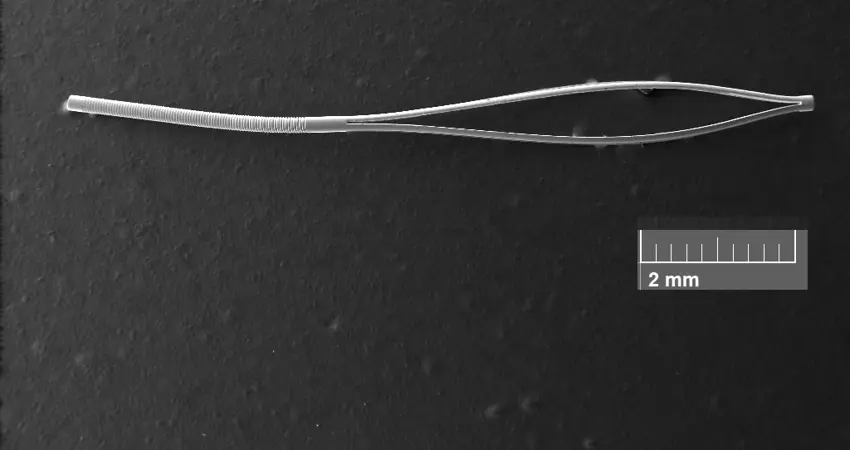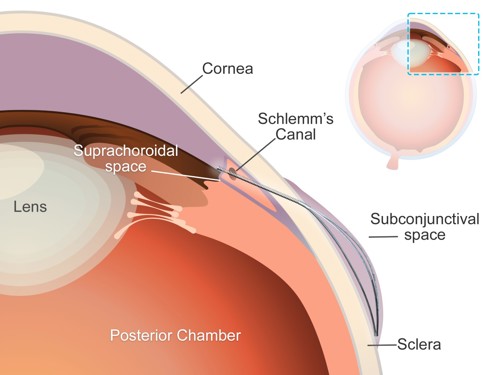21 Aug 2025
Oxford University researchers develop uniquely shaped microstent to combat glaucoma
A team of researchers at the University of Oxford have unveiled a pioneering ‘microstent’ which could revolutionise treatment for glaucoma, a common but debilitating condition.

Scanning electronic microscopy image of a deployable microstent sample.
Glaucoma is a leading cause of vision loss, second only to cataracts. Globally, 7.7 million people were blind or visually impaired due to glaucoma in 20201 . The condition can cause irreversible damage to the optic nerve, due to increased pressure within the eyeball. Current treatment options – principally surgery to create openings in the eye or insert tubes to drain fluid – are highly invasive, carry risk of complications, and have limited durability.
"Our deployable microstent represents a significant advancement in glaucoma treatment," says lead author Dr Yunlan Zhang (University of Oxford at the time of the study/University of Texas). "Current surgical implants for this type of glaucoma have been shown to have limited long-term effectiveness, being susceptible to failure due to fibrosis (scarring) in the eye.”
"Our deployable microstent represents a significant advancement in glaucoma treatment"
The new microstent features a unique structural shape that allows it to expand once in the eye. At 200µm, less than a quarter of a millimetre, the stent’s tiny diameter enables it to fit within the needle of a standard hypodermic syringe, for minimally-invasive insertion. Once in place and expanded, the microstent spans the fluid-filled space between the white of the eye and the membrane that covers it.

By supporting this space, the stent reduces the excessive fluid buildup and resulting intraocular pressure in the eye which is responsible for the most common type of glaucoma, primary open-angle glaucoma. Initial trials carried out in rabbits found that the microstents lowered eye pressure in less than a month with minimal inflammation and scarring. Furthermore, the microstent achieved a greater reduction of eye pressure than a standard tubular implant.
Senior co-author, Professor Zhong You (Department of Engineering Science, University of Oxford) says: “Our microstent is made from a durable and super-flexible nickel-titanium alloy called nitinol, renowned for its proven long-term safety for ocular use. Its unique material and structural properties help prevent subsequent movement, improve durability, and ensure long-term efficacy.”
The research team used advanced modelling techniques to guide the microstent's design and ensure compatibility with the anatomy of the eye. The device's superelastic properties enable it to accommodate how the eye changes and stretches over time without permanent deformation, enhancing its durability and functionality.

"This development has the potential to transform the landscape of glaucoma therapy," notes senior co-author Dr Jared Ching (Department of Engineering Science, University of Oxford). "By offering an enhanced solution in the minimally invasive glaucoma surgery field that combines mechanical innovation with biocompatibility, we hope to improve patient outcomes and quality of life."
Over half a million people in the UK have glaucoma2 – 2% of everyone over the age of 40 – and it is one of the most common causes of blindness worldwide. The introduction of this microstent could mark a pivotal step in enhancing treatment efficacy and accessibility.
The study has been published in The Innovation journal, Cell Press.
1 https://www.nature.com/articles/s41433-024-02995-5
2 Latest research into glaucoma | Moorfields Eye Charity
All images: Credit: Yunlan Zhang, Zhong You, Jared Ching.




